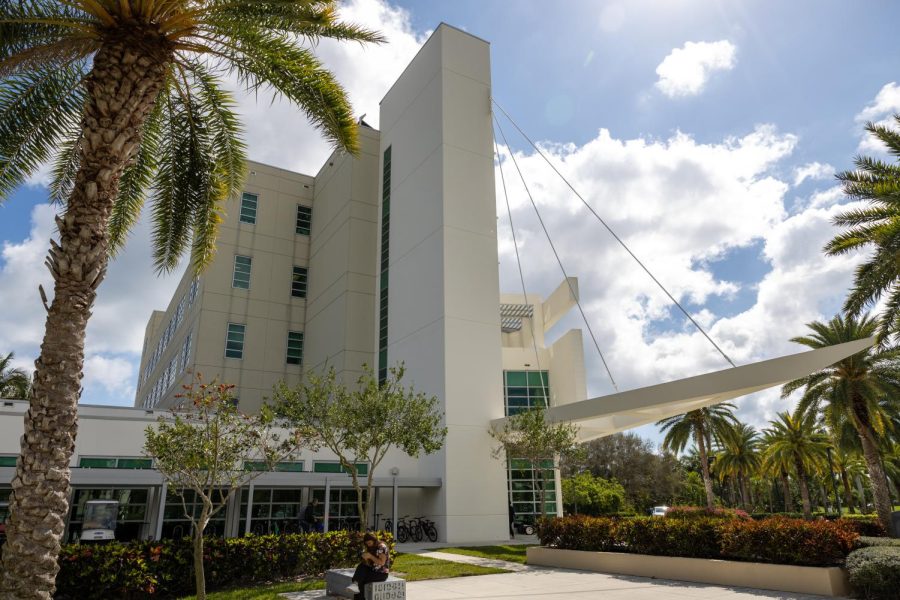The National Science Foundation donates $1 million to promote diversity in STEM
The NSF grant reflects a nationwide movement for diversity in higher education STEM and its importance.
Photo of Engineering East building, home to men and women within STEM majors for classes, modeling, and project design.
February 24, 2023
The National Science Foundation (NSF) ADVANCE program gave nearly a $1 million grant to FAU this past December. The grant is a three-year program meant to promote women and diversity in Science, Technology, Engineering, and Mathematics (STEM) faculty at FAU.
The ADVANCE programs work to increase the presence of women in STEM in professional settings as well as in higher education. The NSF program is meant to develop initiatives pertaining to diversity, specifically focusing on inclusion for women and minorities during the hiring process, as well as the work environment for these individuals.
The need for diversity in higher education is not only a problem FAU is battling, but instead, a movement spread throughout the country. Virginia Tech’s Black Caucus, FAU’s United Faculty of Florida (UFF-FAU), and the Rochester Institution of Technology’s (RIT) Office of Faculty, Diversity, and Recruitment, among many other organizations make efforts to educate, enforce and maximize diversity in universities.
Brandy Faulkner, a Black Caucus member, views diversity as a broad term that boils down to the value of variation and differences.
“We don’t all have the same backgrounds, and that whatever our innate characteristics, whatever those experiences or backgrounds, they should be welcomed into higher ed institutions,” Faulkner said.
Lorraine Steinbiser, a member of the Office Faculty Diversity and Recruitment at RIT, believes diversity in faculty is necessary because it properly reflects the student population.
“In terms of our faculty, and one of the reasons we look at [diversity] is because we recognize that our student population has been changing,” Steinbiser said. “And we really want to bring those diverse individuals into our faculty to be able to relate a little bit better with our student population.”
Steinbiser believes that when students see people who look like them and come from the same social, economic, or racial background, they feel inspired. Students will begin to think that they too can achieve their goals and be successful.
On the other hand, Faulkner believes diversity is important for two reasons. The first is for the sake of new, creative ideas that result from different experiences.
“That can lead to some creativity, some innovation, some problem solving, from a perspective that we don’t have when the population is homogeneous,” Faulkner explained.
Second, the history of systematic racism, discrimination, and exclusion keeps certain people away from opportunities.
“The problem is that diversity alone usually doesn’t accomplish that goal. There’s more that has to be done, but it is a way at least of opening that door,” Faulkner said.
Acknowledging diversity within the context of the grant and more specifically STEM, science is said by some to be male-dominated.
“Well, in its simplest terms, the STEM fields in higher education have been traditionally geared towards men, and so being able to create space within our academic communities for women, to be successful in STEM, I think is very important,” Steinbiser said.
Steinbiser explains how the initiative to create spaces for women manifests through the encouragement of girls in grades K-12, as well as women doing graduate and undergraduate research. As a result, having women in faculty roles is necessary to uplift, guide, and mentor other women on the same path as them.
The effort to diversify universities, specifically faculty, was also strengthened by a regulation created in 2020 by the Florida State Board of Governors.
“Each university shall promote and ensure equal access and opportunity in accordance with this regulation,” reads the regulation.
The document goes on to state that universities must have a designated staff member to ensure equal opportunities for all students, put procedures in place in case of discrimination, and create classes that any and all students can take.
“This led to impressive efforts across colleges to hire and retain diverse faculty; recruit, retain, and graduate a diverse student body; and provide curriculum and student activities that attend to the complexities of public education in a multiethnic democracy,” reads a statement from representatives of the UFF-FAU Executive Committee.
These efforts towards diversity and equity have even reached FAU. “A Strategic Plan for the Race to Excellence” is a 10-year master plan that explains diversity and how to obtain diversity as one of its platforms. It was created in 2015 and continues until 2025.
“Identify and promote opportunities to diversify our students, faculty and staff – and build institutional cross-cultural competencies,” reads the plan’s Diversity Platform.
Some believe the efforts FAU has put into creating a diverse student and faculty population has benefited the university.
“Florida Atlantic University is made desirable in recruitment materials to students BECAUSE of its status as the ‘most diverse public university,’” reads UFF-FAU Executive Committee’s statement.
Kayla Die is a contributing writer with the University Press. For information regarding this or other stories, email [email protected].
















